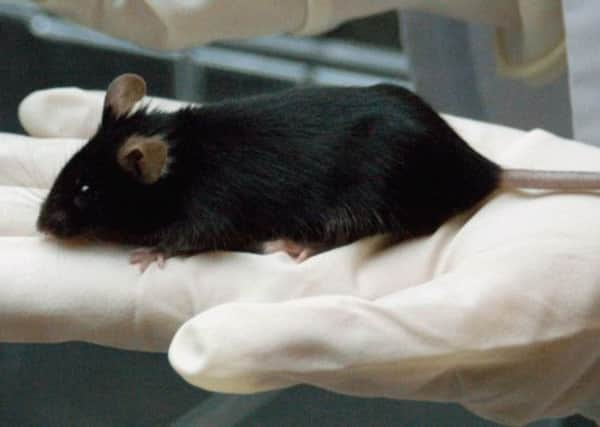New MS hope as crippled lab mice walk again


Scientists admit to being astonished by the result and believe it opens up a new avenue of research in the quest for solutions to MS.
Professor Tom Lane, from the University of Utah, who led the US team, recalled: “My post- doctoral fellow Dr Lu Chen came to me and said, ‘The mice are walking’. I didn’t believe her.”
Advertisement
Hide AdAdvertisement
Hide AdThe genetically engineered mice had a condition that mimics the symptoms of human MS.
They were so disabled they could not stand long enough to eat and drink on their own and had to be hand-fed. The scientists transplanted human neural stem cells into the animals, expecting them to be rejected and provide no benefit.
Instead, the experiment yielded spectacular results. Within ten to 14 days, the mice had regained motor skills and were able to walk. Six months on they showed no sign of relapsing.
Scotland has one of the highest incidences of MS in the world. Studies in the UK have suggested the prevalence in England and Wales is around 120 per 100,000, Northern Ireland about 170 and as high as 190 in Scotland.
A study of north-east Scotland by the Multiple Sclerosis Trust found the level to be 229 in Aberdeen, 295 in Shetland and 402 in Orkney.
The new findings, published in the journal Stem Cell Reports, suggest the mice experienced at least a partial reversal of their symptoms. A similar outcome in humans could help patients with potentially disabling progressive stages of the disease, for which there are no treatments.
“This result opens up a whole new area of research for us to figure out why it worked,” said co-author Dr Jeanne Loring, director of the Centre for Regenerative Medicine at The Scripps Research Institute in La Jolla, California. “We’ve long forgotten our original plan.”
MS is an auto-immune condition caused by the body’s own defences attacking myelin, the fatty insulation surrounding nerve fibres. As myelin is stripped away, nerve impulses can no longer be transmitted properly, leading to symptoms ranging from mild tingling to full-blown paralysis.
Advertisement
Hide AdAdvertisement
Hide AdDrugs that dampen the immune system can slow early forms of the disease, but little can be done in the later stages.
Members of the team believe the surprising success may be linked to the way the stem cells were grown in an unusually uncrowded lab dish. This led to stem cells that were highly potent, with an enhanced ability to produce certain proteins.
Chemical signals from the stem cells instructed each mouse’s own cells to repair the damage caused by MS, said the scientists. One signal was identified as a protein called TGF-beta, raising the prospect of delivering a similar therapy in the form of a drug.
“Rather than having to engraft stem cells into a patient, which can be challenging from a medical standpoint, we might be able to develop a drug that can deliver the therapy much more easily,” said Prof Lane.
He added: “I would love to see something that could promote repair and ease the burden that patients with MS have.”